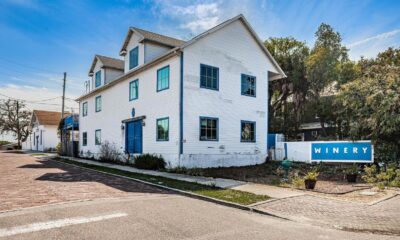Know
Housing crunch could loom as migration inflow surges

A new report by Redfin, an influential real estate sales and research company, confirms what was already known about the Tampa Bay metro area’s ability to attract news residents, but it also details how the region’s surging popularity has created a potentially problematic housing shortfall.
According to the report, which is based on a combination of Redfin search data and U.S. Census Bureau data, the Tampa-St. Petersburg-Clearwater region ranked fourth in the nation in terms of net inflow, behind only Phoenix, Dallas and Orlando and just ahead of Austin, Texas. Tampa Bay’s net population gain in 2020 was 47,000 residents; however, the number of homes for sale dropped by 31.3 percent, compared to 2019.
At the same time, the report stated, home prices are up by double digits. The region’s median home price in 2020 was $275,000 — a 12.2 percent increase over 2019. Another troubling trend is a 25.3 percent drop in the number of building permits for new construction. The imbalance has not gone unnoticed, according to J.P. DuBuque, president and CEO of the Greater St. Petersburg Area Economic Development Corp.
“If you look around our community, there is a lot of attention being paid to housing issues by business leaders, community leaders and government leaders,” DuBuque said. “There’s a wide range of opportunities that folks are looking at to enhance the housing that we have, and it’s my hope that those conversations continue.”
However, a sufficient quantity of housing won’t be enough. Affordable housing will help Tampa Bay capitalize on its rising popularity.
“People aren’t moving to places with more homes available to buy; they’re moving to places with more affordable homes to buy,” Redfin chief economist Daryl Fairweather stated in the report. “Remote workers leaving expensive places for relatively affordable areas, partly because the allure of more house for less money is strong, is exacerbating housing supply shortages in more affordable parts of the country. The inventory crunch in popular destinations could intensify over the next few years as remote workers continue to relocate and buy homes. If developers, zoning boards and local governments prioritize building homes in the affordable areas people are moving into as opposed to coastal cities, that would help combat the housing shortage.”
At No. 9 on the list, Charlotte, N.C., has similar numbers to Tampa/St. Pete/Clearwater, but its number of building permits issued for new construction was up, not down, by 17 percent.
“Partly because inventory here is painfully low, a lot of buyers are turning to new construction, but builders can’t keep up with demand,” stated Steve Cramer, a Charlotte-based Redfin agent, in the report. “There’s a lot of vacant land for sale in the Charlotte area, but because of the pandemic, some builders are experiencing supply shortages. Instead of building an entire community or phase at a time, they’re limited to building four or five homes before releasing more homes for sale.”
However, as DuBuque noted, the wheels are in motion in terms of addressing both the availability and affordability gaps, particularly in St. Petersburg, where city leadership has made affordable and workforce housing a top priority for the Tropicana Field redevelopment.
“A lot of residential opportunities in the planning stages are being worked,” he said. “There’s a lot of activity right now. I hope it comes at the right time.”
The cities with the biggest net outflow in 2020 were, unsurprisingly, New York, Los Angeles and Chicago. The Big Apple’s net population loss was nearly a quarter of a million people, while L.A.’s was almost 125,000. The Windy City’s net outflow, meanwhile, topped 107,000. Click here to read the full Redfin report.








Debbie Kay
February 10, 2021at4:44 pm
I relocated to Pinellas County in 1974 when I was 22. It was beautiful and amazing, then. I would leave Florida if I could. This article addresses housing. I was out shopping last week and traffic is beyond ridiculous !! For example US Hwy 19 is unbelievable !! The roads can only be widened to far, then what ? Especially south of Park Blvd/Gandy Blvd still US 19 also called 34th St. Gulf Blvd is an example of overdevelopment. To even SEE the Gulf of Mexico you have to pull into a public lot. It was once an outstanding tourist destination now it’s not and locals can’t enjoy it either. The good days here are gone and getting worse day by day.
John Donovan
February 9, 2021at4:17 pm
I’ve lived in Seminole and Orange County (“Orlando”). The quality of life in St Petersburg is difficult to beat; inclusive of all options within Florida.